CRATER LAKE & MT. SHASTA (Day 4 - part 1)
Overnight, our air mattress completely deflated, and by 2 am we were forced to sleep on top of our sleeping bags even though it was QUITE crisp out... about 36 degrees F. The weather forecast called for snow tonight.

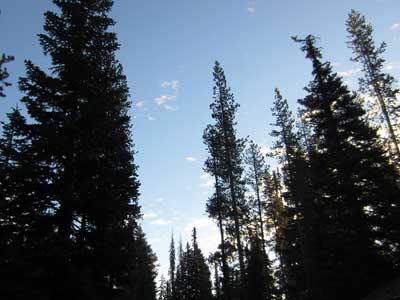
A chilly morning


The campground offered free spring water.
We then set out to explore the park. Because of all the construction we had encountered coming in on the west side, we decided to simply drive along the east side and then back.
Crater Lake National Park was established in 1902, making it the country's fifth-oldest national park. It's the only national park in Oregon. The Rim Drive was completed in 1918.

Click for a larger image

Located right along the road was Vidae Falls. The 100-foot falls originates from a spring on top of the ridge.




Driving along East Rim Drive
Our next stop was Sun Notch. It had "warmed" to 43 degrees F, so we didn't linger too long. We walked up the path to the rim of the lake for some beautiful views.

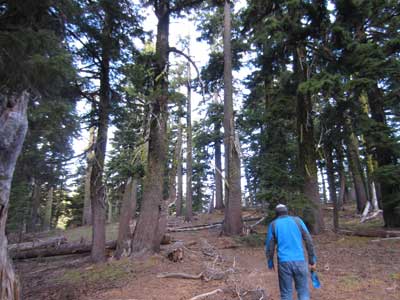
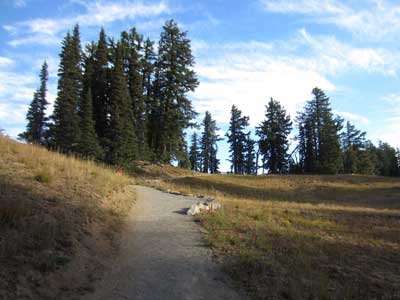

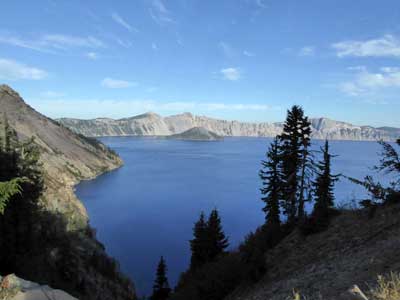
Crater Lake
Originally, there was a giant volcano here, not a lake.
Mount Mazama was one in a long line of volcanoes extending from northern California into Canada. For 400,000 years, repeated volcanic eruptions grew it to 12,000 feet. Rising magma beneath the mountain created greater and greater pressure which finally resulted in a massive eruption some 7,700 years ago. After the magma chamber had emptied, the mountain collapsed under its own weight, forming a deep caldera (volcanic crater). Over the centuries, the deep basin filled with rain and snowfall. While the volcano now appears to be sleeping, it is not extinct.... meaning it could someday erupt again.

The mountain had taken half a million years to grow; the eruptions lasted a week; and it only took 2 - 3 hours for everything to collapse.

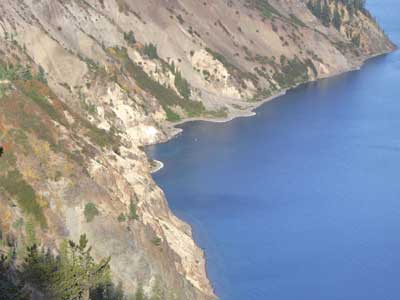
A sharp drop down to the water below
The crater averages some 2,500 feet deep. Its rim ranges in elevation from 7,000 to 8,000 feet, with the lake surface being at 6,178 feet. The lake is 1,943 feet deep. It's the deepest lake in the US and the deepest volcanic lake in the world.
Since no streams flow into the lake, it is not muddied or clouded with sediment, which contributes to its strikingly pure blue color. It holds 5 trillion gallons. It's filled only by rain and snow, and evaporation keeps the water levels balanced.

Wizard Island
On one side of the crater is the 263-foot Wizard Island. It is not the top of the original volcano but rather a newer volcano that emerged from the lake around 7,300 years ago. The last eruption was underwater about 4,800 years ago.




Colorful rock patterns .... Mount Thielsen to the north

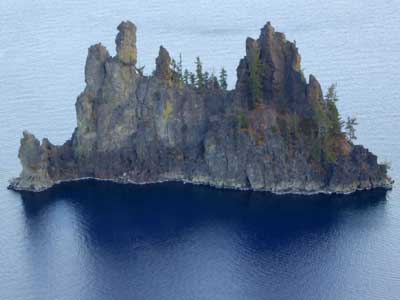
Phantom Ship
Continuing on to Phantom Ship Overlook...



At the overlook


The rocky spires of Phantom Ship are the oldest rocks in the basin, over 400,000 years old. They are remains of an ancient volcanic cone that was engulfed by the growing Mazama volcano. This vent shared the same underground magma chamber. The rocks were exposed after the volcanic collapse.


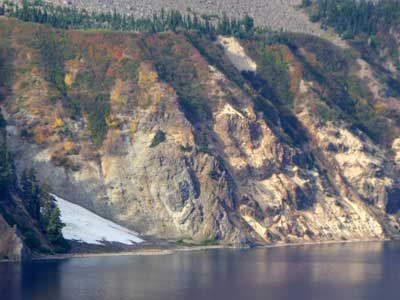

Winter reveals itself in the form of a snow patch (left) and ice lining the shore (right).
return • continue

